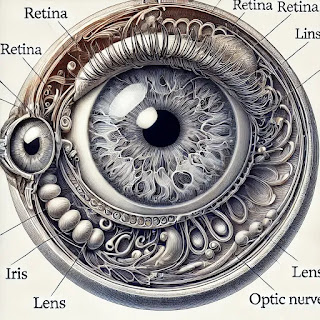### The Case for Divine Design: Why Our Perfect Form Suggests the Existence of God
In a world filled with intricate designs and complex systems, one cannot help but marvel at the sheer perfection found within the human body. From the way our organs function in unison to the miraculous process of healing, there seems to be a harmonious balance that points to an intelligent designer. This notion has led many to believe that our perfect form is not a mere coincidence, but rather evidence of a higher power – God.
#### The Complexity of Human Anatomy
Consider the human eye, often cited as one of the most complex organs in the body. It has the ability to adjust to different lighting conditions, focus on objects at varying distances, and perceive millions of colors. The retina, which contains millions of light-sensitive cells, works in tandem with the brain to process visual information at lightning speed. Such complexity and precision suggest a design that goes beyond random chance.
Similarly, our cardiovascular system is a marvel of engineering. The heart, a muscular organ about the size of a fist, pumps blood through an extensive network of arteries and veins, ensuring that oxygen and nutrients reach every cell in our body. This system operates continuously, without conscious effort, from the moment we are born until the end of our lives. The efficiency and reliability of this system point to a level of planning and foresight that is difficult to attribute to mere evolution alone.
#### The Miracle of Life
Life itself is a miracle that defies simple explanations. The process of conception, gestation, and birth is an awe-inspiring sequence of events that results in the creation of a new human being. Each step of this process is meticulously timed and orchestrated. From the moment a sperm fertilizes an egg, a cascade of events leads to the development of a fully-formed baby. The fact that this process happens repeatedly and successfully is a testament to the idea that there is a guiding hand behind it all.
#### The Healing Power of the Body
Our bodies possess a remarkable ability to heal themselves. When we suffer a cut, our blood clots to stop the bleeding, and our skin regenerates to repair the wound. Our immune system fights off infections, and broken bones can mend over time. This self-repairing capability is another example of the perfection found within our form. It is as if our bodies were designed with the foresight of the challenges they would face, equipped with the tools necessary for survival and recovery.
#### The Balance of Nature
The human body does not exist in isolation; it is part of a larger ecosystem where everything seems to be in perfect balance. The air we breathe, the food we eat, and the water we drink are all part of a delicate interplay that sustains life. The symbiotic relationships between different species, the cycle of seasons, and the natural resources available to us all point to a world that is finely tuned for life. This balance is another indication of a purposeful design, one that ensures the continuity and flourishing of life on Earth.
#### Conclusion
The idea that we are perfectly made leads to the profound conclusion that there must be a God, an intelligent designer who crafted us with care and purpose. The complexity of our anatomy, the miracle of life, our body's ability to heal, and the balance of nature all suggest that our existence is not a random occurrence but a deliberate act of creation. While science continues to explore and explain the mechanisms behind our existence, the evidence of our perfect form provides a compelling argument for the belief in a higher power. It invites us to look beyond the material and see the divine craftsmanship in every aspect of our being.






